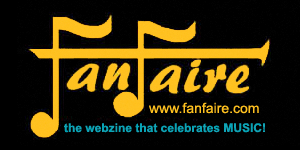In Music of the 20′s, AARON COPLAND examines the new ideas (e.g., the 12-tone system, jazz, functional music, topical and chamber opera, tone clusters), isms (e.g., in music - neoclassicism, polytonalism, nationalism and in the other arts - dadaism, surrealism), that set afire the creative energies of the decade’s musical talents, many of whom would become, if not cause célèbres, names music lovers recognize today: in Europe- Schoenberg, Stravinsky, Berg, Webern, Poulenc, Bartok, Shostakovich, Hindemith, Weill, Milhaud, De Falla, Varèse; in the US and the New World- Roy Harris, Virgil Thompson, Charles Ives, Hector Villa-Lobos. From diverse backgrounds and nationalities, they were united in spirit by a common goal, an aesthetic of their own that would end the dominant German approach to classical music.
Below are video excerpts from Copland’s illuminating discourses on the newfangled notions of the 20s that would eventually be encoded into the DNA, so to speak, of the composers of what we now summarily refer to as contemporary music. As in his numerous expositions on music that make some of the world’s best writings on music appreciation, the dean of American music shows us with great clarity, elegance of language, and easy manner what is in the music and what we should hear while listening to it, often with live studio performances to illustrate his point. As Copland would say, what happens in the end depends on the listener, or viewer in this case. Even the overeducated music scholar is certain to pick up a thing or two. And the layman, if he or she is interested enough to pay attention, will come away from viewing the programs definitely a more intelligent listener, equipped with an arsenal of knowledge that will make his next trip to the concert hall and thereafter to hear music past or present an exciting adventure of the human spirit.
LES SIX. This program is about Paris’ circa 1920′s Group of Six (comprised of five men and one woman), of whom perhaps the best known today are Francis Poulenc and Darius Milhaud. Their collective dream was to end the grandiose German approach to music, or even their fellow Frenchmen’s impressionist inclinations, and replace these with music that sounds like it was created by regular guys. Their musical godfather was Eric Satie.
JAZZ INFLUENCES This is not about Ragtime or Jazz, as played in Dixieland during the “Roaring 20′s”. What Copland explores in this program is the interesting marriage of jazz and classical music - which curiously intrigued the European composers more than it did the Americans. Composers such as Debussy, Stravinsky and Ravel were among the first to infuse their compositions with the novel, polyrhythmic elements of jazz. But it was the French composer Darius Milhaud (also a member of Les six) more than anyone else on whom jazz had the greatest impact, following a trip to Harlem in 1925, and his compositions show it as exemplified in his work La Creation du Monde, performed in its entirety in this program.
12 TONE MUSIC If you’ve always wondered about “atonal” and “12-tone” and how in the world you can begin to understand or begin to appreciate the music these words describe, you can get no better and clearer answer in less than half an hour than in this program - complete with historical context, demonstrations, and a live performance. Pay close attention, and as Copland would say, keep an open mind. Before long, you will be able to walk into a concert hall or an opera house without trepidation, ready to enjoy, yes enjoy! such works as Pierrot Lunaire, and the popularly dreaded Wozzeck.
NEW OPERA Here again, the theme is “Down with Wagner, down with the gods and goddesses and princes and princesses! Let’s do socially useful and down-to-earth and real-life which is hard and grim.” And from this uprising thus emerged the left-wing-populist figure of Kurt Weill, best known today for his Threepenny Opera and Fall of the City of Mahagonny, performed on both Broadway and operatic stages. His works often featured his wife, the actress Lotte Lenya who makes an appearance in this program. The period’s anti-establishment tendencies also saw the birth of chamber opera, often a one-acter such as Paul Hindemith’s “Hin und Zuruck” or “There and Back” - a full performance of which is included in this program featuring a young Beverly Sills in a Boston Lyric Opera staging under the music direction of the iconic Sarah Caldwell.



